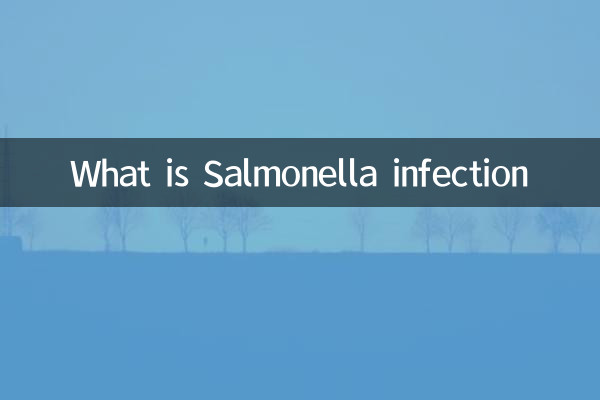What is Salmonella infection
Salmonella infection is a common foodborne disease caused by Salmonella, with numerous cases reported every year around the world. In recent years, salmonella infection has once again become the focus of public attention, especially in summer and periods of frequent food safety incidents. This article will introduce in detail the definition, symptoms, transmission routes, preventive measures and related data of Salmonella infection.
1. Definition of Salmonella infection

Salmonella is a type of Gram-negative bacillus that is widely present in nature, especially in the intestines of animals. Humans are infected with salmonella mainly by eating contaminated food or water. Common sources of infection include raw meat, poultry, eggs, dairy products, etc.
2. Symptoms of Salmonella infection
Symptoms of Salmonella infection usually occur within 6 hours to 6 days after infection, mainly including:
| symptom | describe |
|---|---|
| diarrhea | Usually watery stool, which may be bloody in severe cases |
| stomach ache | Abdominal colic, mostly located around the umbilical or lower abdomen |
| fever | Body temperature rises, up to 38℃ or above |
| Nausea and vomiting | Common in the early stage of infection |
| Headache | May be accompanied by general discomfort |
Most patients will have symptoms for 4 to 7 days and then relieve themselves. But for people with low immunity (such as infants, the elderly, and patients with chronic diseases), salmonella infection can lead to serious complications and even life-threatening.
III. The transmission route of salmonella infection
Salmonella is mainly transmitted through the following channels:
| Spreads | Specific instructions |
|---|---|
| Food transmission | Eat undercooked meat, poultry, eggs or contaminated fruits and vegetables |
| Water transmission | Drink or contact with contaminated water sources |
| Contact transmission | Direct contact with infected animals (such as pet turtles, poultry) or their feces |
| Human transmission | Transmission through fecal-oral route, especially in poor sanitary environments |
4. How to prevent Salmonella infection
The key to preventing salmonella infection is good hygiene habits and food safety measures:
| Preventive measures | Specific methods |
|---|---|
| Cook food thoroughly | Meat and poultry should be heated until the internal temperature reaches above 75℃ |
| Separate raw and cooked food | Avoid cross-contamination and use different cutting boards and knives |
| Store food correctly | Perishable foods should be refrigerated (below 4℃) to avoid long-term storage of room temperature |
| Wash hands frequently | Always wash your hands with soap and water before handling food, before meals, and after going to the toilet |
| Avoid raw food | Do not eat raw eggs or unsterilized dairy products |
5. Global statistics on salmon bacteria infection
According to the latest data from the World Health Organization (WHO) and national CDCs, the incidence of salmonella infection is as follows:
| Region/Country | Number of reported cases annually | Common serotypes |
|---|---|---|
| worldwide | About 93 million cases | Salmonella enteritis, Salmonella typhimurium |
| USA | About 1.35 million cases | Salmonella enteritis, Salmonella typhimurium |
| EU | About 100,000 cases | Salmonella enteritis, Salmonella typhimurium |
| China | About 300,000 cases | Salmonella enteritis, Salmonella typhimurium |
6. Treatment of Salmonella infection
Most patients with salmonella infection do not require special treatment and mainly relieve symptoms by:
| Treatment method | illustrate |
|---|---|
| Replenishing fluid | Prevent and treat dehydration, oral rehydration salt or intravenous infusion |
| Symptom-based treatment | Use antipyretic drugs to relieve fever and avoid using antidiarrhea drugs |
| antibiotic | Only used for severe patients or high-risk groups, please follow the doctor's advice |
7. Recent hot events of salmonella infection
According to the search data of the entire network in the past 10 days, the following topics related to salmonella infection have received widespread attention:
| Hot events | time | area |
|---|---|---|
| Salmonella contamination recall for a certain brand of chocolate product | November 2023 | Many European countries |
| Chicken product in a fast food chain triggers salmon bacteria infection | November 2023 | USA |
| Pet turtle-related salmonella infections increase | November 2023 | Australia |
Conclusion
Salmonella infection is a preventable foodborne disease that can effectively reduce the risk of infection by maintaining good personal hygiene habits and food safety awareness. If suspected symptoms appear, seek medical attention in time and inform the doctor of possible exposure history. Food safety regulatory departments should also strengthen monitoring of the food production chain to reduce the occurrence of salmonella contamination incidents.

check the details

check the details